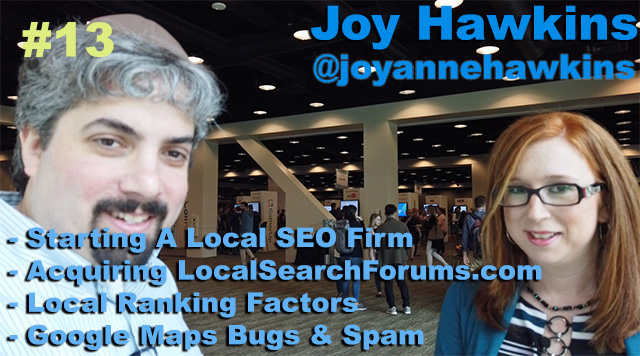How would you like to get your brand featured on major online websites like Buzzfeed, the Washington Post, or Bustle?
When you earn the attention of top-tier press, you reap the business benefits of large-scale brand exposure and the SEO benefits of high-authority backlinks. It’s a win-win.
But it’s increasingly difficult to win the attention of the online press. Any day of the week, you have tweets from Chrissy Teigen and the contentious presidential election dominating the media coverage and driving the online social discussion.
There is plenty of anecdotal evidence to suggest that there is an ideal time to pitch a writer or the best way to write a press release or an email for optimal success. The problem with a lot of digital PR advice you read online is that it’s purely situational and can vary from person to person.
Whitepaper
That’s why my team decided to end the back and forth once and for all. In a new publisher survey, we asked 500+ online writers and editors from sites like the New York Times, CNN, Cosmopolitan, and Mashable how they want to be pitched, what types of content they prefer to cover, and what PR professionals should include (and exclude) in their outreach emails in order to gain their trust and earn a coveted space on their website.
Here are 10 major data-backed insights that you can use to optimize your outreach strategy.
The top three reasons why journalists decline your pitch
The top three reasons journalists decline your pitch is because it’s irrelevant, boring, or too self-promotional.
A crucial reason why a writer rejected your email pitch is that it’s irrelevant. That’s right, 88% of writers have rejected a pitch for it being unrelated to their beat.
Note: Password: exclusive – a password will be taken down to facilitate the exclusive for SEW.
Almost 64% of writers have rejected a pitch because it was simply too boring. If you fail to explain why the content you’re pitching is exciting or newsworthy, how can you expect an online editor to envision the story?
Another 62% of online journalists have rejected a pitched because it’s too self-promotional. Online editors seek to inform and entertain their audiences. A tired pitch about some new thing that’s happening at your company or some funny thing your CEO tweeted is not going to capture the attention of the masses and drive traffic – and editors know that.
Over 42% of writers reported receiving 11 to 100 pitches a day
Over 42% of writers reported receiving 11 to 100 pitches a day and almost five percent receive 100+ email pitches per day.
To a certain extent, online writers and editors rely on PR pitches to provide them with content to fill their editorial calendar. But can you imagine receiving 100 pitches a day? It’s no wonder that journalists take to Twitter so often to vent about the latest #PRFail that recently arrived in their inbox. With all of that inbox clutter, who wouldn’t be frustrated with a lazily written, irrelevant pitch?
Time = money. You’re wasting both when you reach out to a writer about content that’s relevant to them or their beat.
Only 22% of digital writers open every single email addressed to them
Only one out of every five people you send emails to will open every pitch addressed to them. And most people, about three in four, open an email based on the subject line alone. This places a lot of pressure on your subject line writing, which is why it’s one of the most important elements of your outreach email strategy.
Read all about how to perfect your subject lines for PR outreach in a previous post for SEMrush.
Most writers (58%) prefer to receive a pitch between 100 and 200 words
Keep it short and sweet. Given the sheer volume of pitches they receive daily, writers are too busy to sift through a complicated pitch to decipher what it’s about. If they open your email, you have about half a minute to capture their attention before they move on to the next pitch.
Here are some tips to keep the word count of your email down.
- Include only the most relevant, interesting, and newsworthy details of your content
- Use bullet points to list disparate details
- Link to the full content from your email (that is, don’t attach additional info to the email)
Some content topics are more competitive than others
Our survey found that writers who cover popular topics, such as women’s interest, home and lifestyle, and entertainment receive double the number of pitches than writers covering personal finance and business.
How can you change your content marketing strategy in light of these stats? Create content on the sphere of two verticals. For example, a piece of content that explores inter-office dating can be covered by writers who cover two different beats – dating and career/business.
By creating content that naturally appeals to more than one audience, you double your potential for exposure right out of the gate.
Staff editors are pitched more than staff writers or freelance contributors
According to our data, it’s safe to say staff editors have more inbox congestion than staff writers or freelancers. However, that doesn’t mean that you should remove them from your outreach list. When it comes to who to pitch, the best answer is still unclear. Despite the data suggesting you have a better chance with freelancers and staff writers, the bottom line is that they oftentimes still have to pitch the editor their story. By writing directly to the editor, they make the decision right then and there on whether to assign the story.
There are pros and cons to pitching all people in all three of these roles, but it’s good to keep their different roles and responsibilities in mind when actively pitching a content campaign.
Share this article
Related articles
The best time to send pitches are 5 am to 12 pm on Monday, Tuesday, and Wednesday
After years of practicing PR for clients across all topic verticals, it’s long been a suspicion of mine that pitches sent on a Friday tend to fall on deaf ears and require a follow up to really be seen. If you felt the same way, then you’re experience is about to be validated.
Our survey of 500+ journalists found that the best days to send email pitches are at the beginning of the workweek: Monday, Tuesday, and Wednesday. And the best time? Survey says early morning is better, between 5 am to 12 pm.
Journalists prefer zero or one follow up emails an average of three to seven days after you’ve sent your initial pitch
Speaking of follow up emails, should you even send them at all? While 20% of writers believe that you should never send a follow-up email, the majority of writers (60%) consider one follow-up email to be the most acceptable.
When should you follow up? Data shows that most writers prefer that you follow-up three to seven days after you send the first email pitch.
Heed Phil’s warning. It may be surprising to you that some people send follow-ups to journalists who’ve already declined their pitch.
The thing is, many PR pros are still using unsophisticated mass outreach tools that are too automated. If you’re in doubt about your tool, it’s better to use a spreadsheet and focus on “one-on-one” email outreach. Automate effectively, responsibly, and at your own risk.
If you provide good content, journalists will want you to keep in touch
We asked 500+ journalists and online writers how they want to keep in touch with a PR pro after working with them on a story. They told us that the best way to stay in contact is via email (77%) and by continuing sending the journalist relevant content (57%).
Journalists were quick to note that they do not want phone calls or to meet in person but were more open to chatting on Twitter and LinkedIn occasionally.
Over 53% of writers say they don’t subscribe to press release sources
Is the press release “dead?” While it is still a strategy that marketers and brands employ, its usefulness is slowly declining in favor of direct, targeted “One-on-one” outreach.
Around 20% of writers admitted that they never write a story based on a press release, while about 29% of writers we surveyed say they use press releases for their stories more than 10 times a year.
Conclusion
Offering compelling, newsworthy, data-driven content is the key to earning top tier press mentions. 10x content paired with strategic one-on-one digital PR is the winning combination to earn attention and authority for your brand.
When it comes to earning press on top tier online websites like the NYTimes, CNN, Forbes, the Atlantic, and more, it’s not impossible, but it is increasingly harder with countless pieces of content being created every day. Capturing and keeping a journalist’s attention is a competitive game. Keep these stats in mind to give your content the upper hand in a crowded inbox.
Domenica is a Brand Relationship Manager at Fractl. She can be found on Twitter .
Whitepapers
Related reading
There are only two broad strategies to improve your link building effectiveness, both of which come from a framework using BJ Fogg’s behavior model.
It’s key to focus on one or two tests to ensure you reach statistical significance. Guide to testing ad copy, landing pages, new engines and ad formats.
Global consumer Internet video traffic will account for 80% of all consumer Internet traffic. Pages with videos are 53 times more likely to rank on Google.
With Google releasing more information about updates, you should see it as a good practice to highlight this information in your Google Analytics account.
This marketing news is not the copyright of Scott.Services – please click here to see the original source of this article. Author: Domenica D’Ottavio
For more SEO, PPC, internet marketing news please check out https://news.scott.services
Why not check out our SEO, PPC marketing services at https://www.scott.services
We’re also on:
https://www.facebook.com/scottdotservices/
https://twitter.com/scottdsmith
https://plus.google.com/112865305341039147737
The post How to pitch to top online publishers: 10 Exclusive survey insights appeared first on Scott.Services Online Marketing News.
source
https://news.scott.services/how-to-pitch-to-top-online-publishers-10-exclusive-survey-insights/
























































